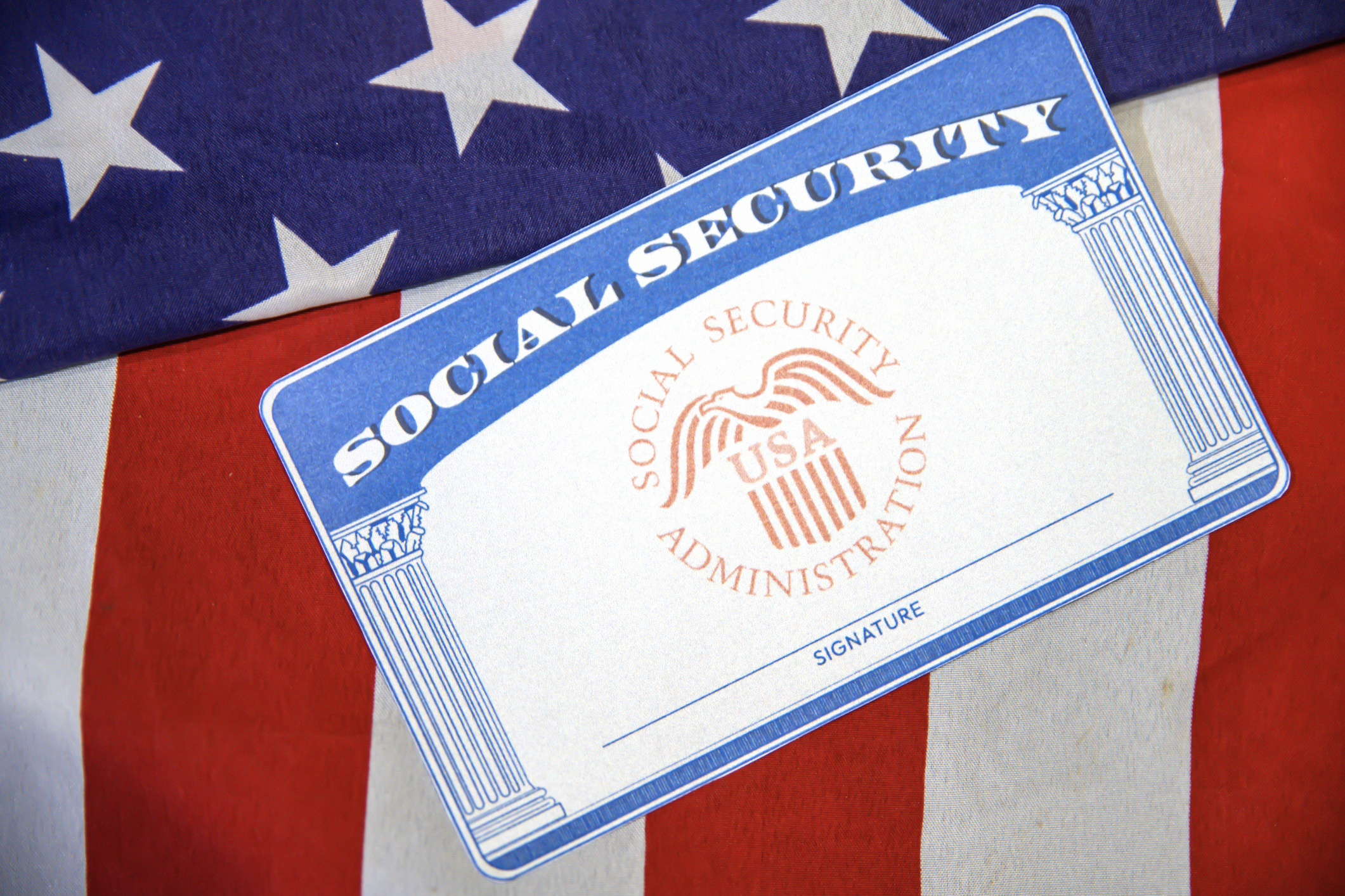Social Security Fairness Act Payments Checklist: Nine Things to Know
This Social Security Fairness Act checklist explains what public sector retirees can expect from SSFA, including how much more money they might receive.


The Social Security Fairness Act (SSFA) was passed and signed into law in the final days of 2024, paving the way for over 3 million retirees, spouses and surviving spouses to receive back Social Security benefits and monthly increases going forward.
While many people are aware that retroactive payments and monthly increases are being paid out, there are still many questions about the details, including who is eligible to receive the payments, how much the payments will be for, and when these payments will arrive.
Retired public sector employees and spouses who are eligible for retroactive benefits from 2024, and an increase in 2025 monthly payments, will receive the monthly increases in their March check that arrives in April.

Sign up for Kiplinger’s Free E-Newsletters
Profit and prosper with the best of expert advice on investing, taxes, retirement, personal finance and more - straight to your e-mail.
Profit and prosper with the best of expert advice - straight to your e-mail.
Retroactive payments began arriving the week of February 24. As of March 4, 1,127,723 people had received more than $7.5 billion in retroactive payments. The Social Security Administration (SSA) says that some beneficiaries will have to wait longer if their cases are 'complex.'
Those impacted by the WEP and GPO may receive up to two mailed notices: one when WEP or GPO is removed from their record, and the other when the monthly benefit amount is adjusted to reflect their new higher monthly payment amount.
I will be closely watching for the release of additional information about the payments and increases for the complex cases that will take longer to process and reporting the developments here. Bookmark this page to stay up-to-date as the (SSA) issues details about the implementation of the new law.
1. What is the Social Security Fairness Act (SSFA)?
The Social Security Fairness Act (SSFA) was signed into law by President Biden on December 21, 2024. It repealed the Government Pension Offset (GPO), enacted in 1977, and the Windfall Elimination Provision (WEP), enacted in 1983.
The GPO was the first offset provision to be passed and was signed into law by President Jimmy Carter. It was enacted to help improve the financial health of the program by reducing benefits paid to a spouse or surviving spouse collected based on the employment of someone who had a non-covered pension.
The WEP was enacted during Ronald Reagan's presidency. The WEP, which reduced Social Security benefits for workers who receive government pensions not covered by Social Security, was another cost-saving measure. It was also meant to correct a glitch in the benefits formula that treated government employees, who may have contributed to the system for only a few years, as low-wage workers. As a result, those public employees received a disproportionately large Social Security benefit — plus their government pension.
Now, public sector retirees and their spouses will receive the full benefits in addition to their pensions. The SSFA is being applied retroactively to benefits paid after December 2023. That means eligible retirees and spouses will receive a payment to cover the shortfall of their 2024 benefits and will get a monthly increase effective for 2025 and every year after.
2. Who is eligible for the retroactive payments and monthly increase?
Are all public sector retirees eligible for the retroactive payments and increases for 2025 and after? No, you have to meet certain requirements. Only retirees, their spouses or surviving spouses who receive pension benefits based on work not covered by Social Security may see benefit increases under this new law.
According to the SSA, about 72% of state and local public employees work in Social Security-covered employment, where they pay Social Security taxes and are not affected by WEP or GPO. Those individuals will not receive a benefit increase due to the Act.
The Congressional Budget Office (CBO) estimates that 2.1 million retirees, 3% of current SS beneficiaries, will be eligible to receive a monthly increase. The number of spouses and surviving spouses is smaller, with only 770,000 recipients expected to receive an increase due to the repeal.
3. How much will the retroactive payment be? How much will monthly benefits increase by?
I think this is the information most people want to know — how much the retroactive payments will be and the amount of the monthly increase. Fortunately, the CBO has provided estimates of the average amounts the different groups of beneficiaries can expect to receive.
We have more information about the average size of the retroactive payments that 1,127,723 people have received. As of March 4, the average retroactive payment so far is $6,710.
On average, public sector retirees can expect an increase in monthly benefits of $360 in December 2025, which will reach $460 by December 2033.
Spouses and surviving spouses are in line for smaller monthly increases. By December 2025, spouses will receive an average $700 increase, and surviving spouses are expected to see an increase of $1,190. These numbers will grow to $860 and $1,520, respectively, in December 2033.
These estimates are just averages, however. Ultimately, the amount of monthly benefits may change and can vary greatly. The amount will depend on factors such as the type of Social Security benefit received (retired worker, spouse or surviving spouse), the amount of the person's pension and when the employee retired. Some people's benefits will increase very little while others may be eligible for an increase over $1,000 more each month.
4. How far back will SSFA relief be applied to retiree benefits?
December 2023 is the last month that the WEP and GPO will apply to benefits. This means that benefits payable after December 2023 are eligible for the upward adjustment. So, all 2024 payments are eligible for a recalculation without the WEP and GPO reductions. As a reminder, benefits payable in January are typically disbursed in February, and so on.
Public sector retirees and spouses/surviving spouses will eventually receive a payment reflecting what is owed from 2024 and will see an adjustment to their 2025 monthly benefit amounts.
5. When will you see your retroactive Social Security benefit increase because of the SSFA?
If you were collecting Social Security benefits in 2024 that were reduced by the WEP or GPO, you will receive your retroactive payment by the end of March. The payments starting going out the week of February 24. Be aware that you may receive the retroactive payment before getting the mailed notice from the SSA about the payment.
To date, 1,127,723 people have received more than $7.5 billion in retroactive payments; the average payment is $6,710. This retroactive payment will cover the increase in your benefit amount back to January 2024, the month when WEP and GPO no longer apply.
6. When will you see your monthly Social Security benefit increase because of the SSFA?
If your 2025 monthly benefits were reduced by the WEP or GPO, you are eligible for this upward adjustment. Social Security benefits are paid one month behind. According to the SSA, most affected beneficiaries will begin receiving their new monthly benefit amount for March 2025 in April 2025.
As of March 19, the SSA has processed 75% or 2.2 million of the monthly increases set to be distributed next month.
7. Complex cases will require more time
The SSA says that they were able to expedite payments by automating the process. Unfortunately, this means that complex cases will take longer to complete. These cases will require additional time to manually update the records and pay both retroactive benefits and the new benefits amount.
The SSA urges beneficiaries to be patient and not contact the SSA until April. These cases will be processed incrementally throughout the month of March. If you want to check for progress on your payment, the SSA will continue to provide updates on their dedicated SSFA webpage.
8. What should you do now that the Social Security Fairness Act is law?
If you are retired, you may need to file an application to get the benefit of the SSFA if you never applied for benefits. Be aware that all other Social Security laws and policies, such as benefit reductions for claiming benefits before the full retirement age (FRA) and the annual earnings test, still apply.
Current public sector employees and retirees. Are you waiting to file until you have reached your FRA in order to boost your monthly check by earning delayed retirement credits? If so, you don't have to do a thing to benefit from the repeal of the WEP provision. When you file for benefits, your monthly amount will not be reduced. You aren't entitled to back benefits because you were collecting benefits in 2024.
If you are unsure if you applied or have never applied. Now is the time to fill out the application. The earlier you get it in, the sooner it can be processed.
The easiest way to apply for retirement or spouses' benefits is online at the SSA website. Be aware that the online application continues to collect pension information until the SSA updates its forms. However, the offset will not impact your benefits. The question is a relic that will be removed.
Special Fairness Act application intake process for retired workers and spouses/surviving spouses. The SSA will now take applications by telephone for people who did not previously apply for retirement benefits because of WEP, or spouse's or surviving spouse's benefits because of GPO. If you meet these conditions, call 1-800-772-1213 (call TTY +1 800-325-0778 if you're deaf or hard of hearing) to get started; SSA phone lines are open Monday through Friday, from 9:00 a.m. to 6:00 p.m. ET. When the telephone system asks, "How can I help you today?," say "Fairness Act." You will then be asked a few questions and those answers will help the SSA connect you to a WEP-GPO trained representative to take your claim.
Previously, surviving spouses were unable to apply for benefits over the telephone.
If you have previously applied for Social Security benefits. If you have previously applied for benefits as a worker, spouse or surviving spouse — you don't have to do anything. As long as you have your current mailing address and direct deposit information on file, the SSA has everything it needs to notify you and disburse your retroactive benefits.
9. Why did SSA request information regarding the amount of my pension?
Because the WEP and GPO still apply to months prior to January 2024. In some instances, the SSA may need to request the amount received for your pension from work not covered by Social Security to verify they are paying you correctly for these months. It isn't a trap to reduce your retroactive payment or monthly increase.
Stay tuned
As we wait for the SSA to provide updates about when payments will be disbursed and monthly benefits will be raised for complex cases, retirees should open a my Social Security account to get updates directly from the SSA.
You can use the account update your vital information if necessary. It is the easiest and quickest way to change your address or direct deposit information with SSA. There is no wait on hold need or visit a local SSA office. Visit www.ssa.gov/myaccount to sign in or create an account.
Recent updates
Updated on February 27, 2025 to reflect payment schedule for back benefits from 2024 and monthly increases for 2025. Updated on March 5, 2025 to include statistics about the number of retroactive payments distributed, the total amount paid and the average payment. Updated on March 11, 2025 to update the number of monthly beneficiary increases that had been processed.
Related Content
Get Kiplinger Today newsletter — free
Profit and prosper with the best of Kiplinger's advice on investing, taxes, retirement, personal finance and much more. Delivered daily. Enter your email in the box and click Sign Me Up.

Donna joined Kiplinger as a personal finance writer in 2023. She spent more than a decade as the contributing editor of J.K.Lasser's Your Income Tax Guide and edited state specific legal treatises at ALM Media. She has shared her expertise as a guest on Bloomberg, CNN, Fox, NPR, CNBC and many other media outlets around the nation. She is a graduate of Brooklyn Law School and the University at Buffalo.
-
 Married? Five Ways to Ensure Your Estate Plans Work in Tandem
Married? Five Ways to Ensure Your Estate Plans Work in TandemGetting on the same page now means fewer potential problems when it counts.
By Kiplinger Advisor Collective
-
 12 Investments No Retiree Should Make
12 Investments No Retiree Should MakeIn retirement, when it's wise to take fewer risks with your nest egg, some investments are just nuts.
By David Rodeck